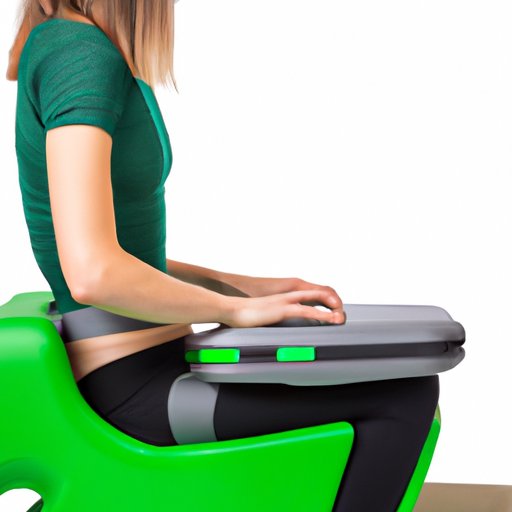
Introduction
Hunchback, also known as kyphosis, is a condition that affects the curvature of the spine, causing a rounded upper back and a potentially restricted range of motion. This condition is often associated with poor posture and can develop due to bad habits like slouching or sitting for long periods at a time. While the condition may seem daunting, there are a variety of ways to prevent and correct it, including lifestyle changes, exercise, and massage/bodywork. In this article, we’ll explore different methods for tackling hunchback and realizing a healthier, more comfortable spine.
Understanding the Causes of Hunchback
Before we delve into methods for ridding ourselves of hunchback, it’s important to understand what causes this condition. In many cases, hunchback can occur from poor posture, which causes the spine to curve in ways that put undue pressure on the back muscles and joints. Habits like slouching, carrying heavy bags, leaning forward while working on a computer, or texting on a phone for long periods can exacerbate the development of hunchback. Additionally, osteoporosis, a disease where bones become brittle and fragile, can contribute to hunchback formation in older adults. By recognizing these factors and gaining awareness about how our postures may impact spinal health, we can take targeted steps to prevent or even correct hunchback.
Posture Correction Exercises
Exercise plays an instrumental role in maintaining good posture. Yoga and Pilates both have a focus on strengthening muscles in the back and core, which can help to correct hunchback over time. Weightlifting can also help to build muscle mass and improve overall strength, which can contribute to better spinal alignment. Exercises that focus on stretching, like yoga and Pilates, can also help to alleviate muscle tension, which can contribute to a more relaxed and stable spine. By incorporating these exercises into your daily routine, you can work on undoing the damage that months or years of poor posture may have caused. Just as important, maintaining a consistent regimen can help prevent the development of hunchback from the outset.
Massage and Bodywork
Massage and bodywork can complement posture correction exercises by improving blood flow and loosening tense muscles. Chiropractic care can help to adjust misaligned spines that were caused by poor posture. Physical therapy can strengthen specific muscle groups that can contribute to better posture. Acupuncture can also provide pain relief and aid in relaxation. By incorporating forms of massage or bodywork into your regular routines, you can help alleviate pain and tension and improve flexibility.
Using Ergonomic Equipment
Ergonomic chairs and desks can also make a big difference in preventing hunchback formation. The appropriate ergonomic chair will ideally keep your back in a neutral position, preventing undue stress on your upper or lower back. Desks should be positioned at a comfortable height to avoid leaning forward. A raised monitor can encourage good posture. Overall, investing in ergonomic products can encourage good postural habits and help you feel more comfortable throughout the workday.
Lifestyle Changes
Sometimes prevention is the best “cure.” By adopting better habits that support good posture, people can significantly reduce their chances of developing hunchback. Some ideas for lifestyle changes include sitting up straight while working at a computer, taking breaks to stand, stretch, and walk around frequently, sleeping in a supportive mattress that provides back support, and doing exercises regularly to strengthen the back muscles and improve overall posture. When shopping for daily items like backpacks, take care to choose options that distribute the weight evenly across both shoulders.
Conclusion
While hunchback can be a frustrating and potentially painful condition, it is far from insurmountable. By understanding the causes of poor posture and taking action with posture correction exercises, massage and bodywork, ergonomic equipment, and lifestyle changes, you can lay the groundwork for a healthier, happier back. Don’t wait until the pain sets in and the hunchback is hard to reverse. Start adopting good habits now and begin seeing an improvement to the shape of your spine. You’ll thank yourself for it later.




